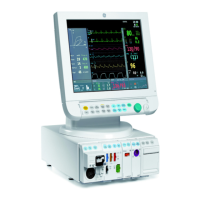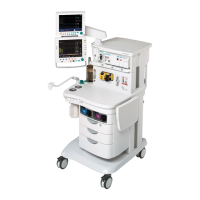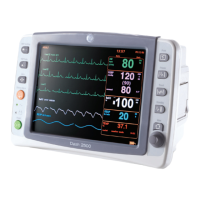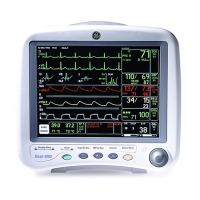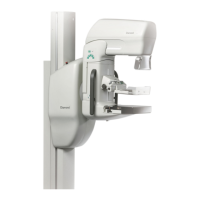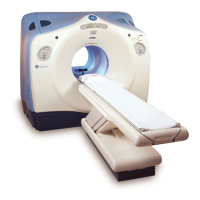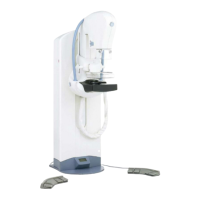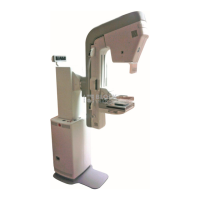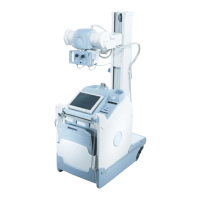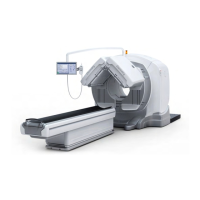Datex-Ohmeda S/5 Compact Anesthesia and Compact Critical Care Monitors
32
Document no. M1144955-001
Timeouts is a cumulative number that indicates how many times the module has not responded to the
monitor's inquiry.
Bad checksums is a cumulative number that indicates how many times communication from the module to the
monitor has failed.
Bad c-s by mod is a cumulative number that indicates how many communication errors the module has
detected.
The monitor starts counting these items at power up and resets to zero at power off. The values may also be
reset when a module is attached to the monitor frame and be set to 32769 or continuous counting may be
started when the module is removed from the monitor frame.
The nonzero values do not indicate a failure, but the continuous counting (more than 5 per second) or value
32769 indicates either a serial communication failure or a module not in place. Also failures in other modules
may cause these numbers to rise or be set to 32769.
RAM indicates the state of the external RAM memory.
ROM indicates whether the checksum at the EPROM is in accordance with the software calculated value.
EEPROM indicates if the values stored in the permanent memory are valid.
The state is either OK, Fail or ? (module not in place or a communication error).
4.6.1 COP Calibrations
How to calibrate
The calibration requires a pressure transducer (with an appropriate cable) and a pressure
manometer.
1. Connect the pressure transducer with the pressure manometer to the P4 connector.
Select Calibrate P4. Leave the transducer at room air pressure.
2. Press the ComWheel to start zeroing.
3. Supply a pressure of 100 mmHg to 300 mmHg to the transducer. The recommended
pressure is 200 mmHg.
4. Set the pressure on the display to match the pressure reading on the manometer and
press the ComWheel.
Calibrate P4
This function is for calibrating the invasive blood
pressure channel P4.
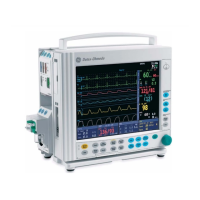
